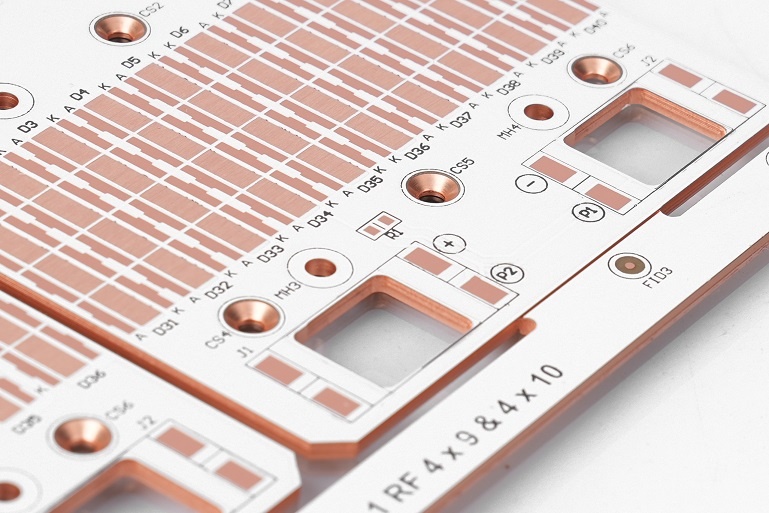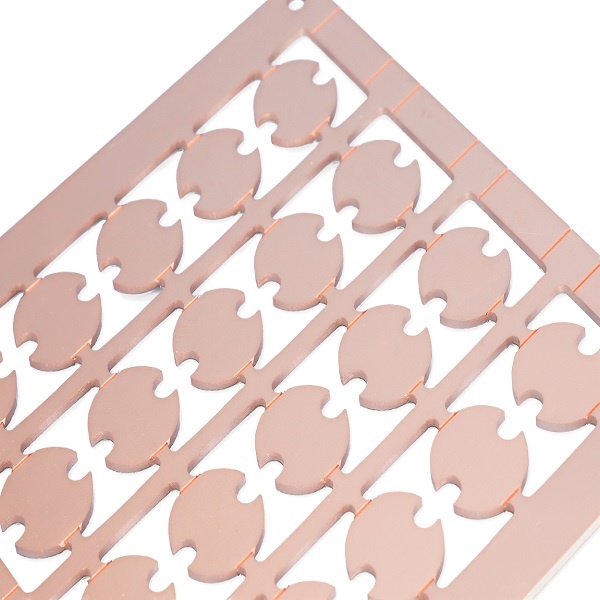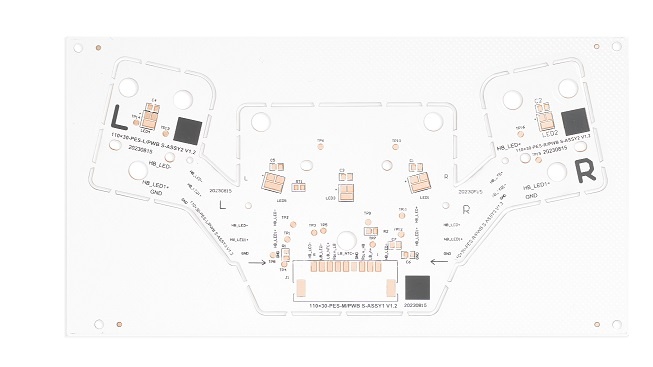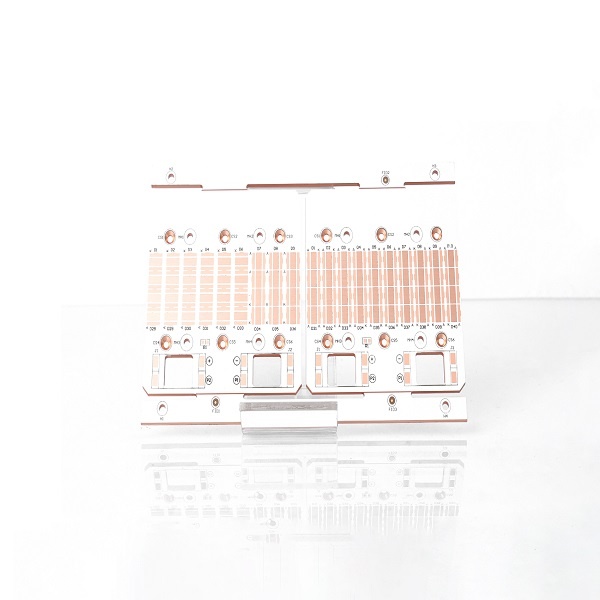Everything You Should Know About Metal Core Circuit Board
- Views
- 15 May 2024
- What is a Metal Core Circuit Board?
- Why does Metal Core Circuit Board Popular?
- What Types of Metal Core PCBs are Available?
Metal core circuit board (MCPCB) becomes more and more popular due to the increasing demands of high density and high-power devices. A metal core circuit board is made by the metal core as the base material and coated with a layer copper foil as circuit trace. This substrate can provide excellent thermal performance and is suitable for applications that need to handle high power and high temperatures, such as LED lighting, power modules and automotive electronics. Metal core circuit board has good thermal conductivity and mechanical strength, but is relatively expensive to manufacture compared to other substrate types. In this blog, we will introduce its benefits, advantages, types, applications and so on.
What is a Metal Core Circuit Board?
A metal core circuit board, also known as a metal-based PCB or simply an MCPCB, is a type of PCB that includes a metal base material. Unlike traditional PCBs that use fiberglass (FR4/CEM1-3) as the base material, MCPCBs use metals such as aluminum, copper, or steel as their core. The metal core is typically used to improve thermal conductivity, enabling the efficient dissipation of heat generated by electronic components. A basic structure of metal core circuit board including:
Solder mask/Silkscreen
Circuit layer/Copper Foil layer
Dielectric layer
Metal core layer

Why does Metal Core Circuit Board Popular?
The popularity of metal core circuit boards can be attributed to their superior thermal management capabilities, which cannot be achieved by ordinary PCBS. Thermal management capabilities depend on the metal materials and manufacturing processes used, and different materials have different thermal conductivity values. For example, aluminum core PCBS always have 1-3W/m. The thermal conductivity of copper core PCB can be as high as 400W/m.k. In common high-power and heating applications such as LED lighting, power supplies and automotive electronics, efficient heat dissipation is critical. MCPCBS provide an effective solution to improve performance and reliability by diverting heat from critical components.
In addition, MCPCBS are known for their mechanical strength and good dimensional stability. The metal core provides structural strength, making these plates less prone to damage and warping. As a result, metal-core circuit boards are popular in applications where rugged environments and mechanical stability are critical.
What Types of Metal Core PCBs are Available?
There are many varieties of metal core PCBS, and Best Technology offers custom services that can make your MCPCB suitable for your specific application and performance requirements. The main types include:
1. Single-sided MCPCB
The single sided MCPCB consist of one layer copper trace, one dielectric layer and a metal core layer. They are relatively simple in design and manufacturing compared to other kinds of MCPCB. And if you just want a metal core PCB for heat dissipation and normal lighting, them single layer MCPCB is the best and cost-effective option.

2. Single-sided double-layer MCPCB
It has two layers circuit on the top of metal base, and metal core on the bottom layer, but from the visually, it only has circuit layer on the top side, so we call it as single sided MCPCB as well. This kind of MCPCB is relatively complex than standard single sided MCPCB, as we need to make a double sided FR4 PCB first and then laminated it with metal core.
3. Double-sided MCPCB
Double sided MCPCB, as its name suggest, it has circuit layer on the both top and bottom side, and the metal core is located at the middle of these two-circuit layers. That means we can populate SMD components on the both sides, so it can be used for more complex applications.
4. Multi-layer MCPCB
In essence, multi-layer MCPCB also is a kind of single sided MCPCB, since it only has trace layer on the top side, and metal base as the bottom. But different with single sided double layer MCPCB, the multi-layer MCPCB has more trace layers, normally 4 layer or more. They can be used in highly complex and high-power applications that require advanced thermal management and routing capabilities.
5. Semi-flexible MCPCB
This is a new product that developed by Best Technology in 2023. Semi-flexible MCPCB combining flexible circuit board (FPC) and metal core PCB. So, it has the flexibility of flex circuits and good heat dissipation of metal core circuit boards. It is very suitable for applications where requires both flexible characteristics and thermal management.

What are the Advantages of Using Metal Core Circuit Boards?
(1) The heat dissipation is significantly better than the standard FR-4 structure.
(2) The thermal conductivity of the dielectric used is usually 5 to 10 times that of conventional epoxy glass, and the thickness is only one-tenth.
(3) The heat transfer index is more efficient than the traditional rigid PCB.
(4) A lower copper weight can be used than indicated in the IPC recommended figure.
However, there are also has some disadvantages, such as relatively high cost, design has certain limitations of metal core circuit board. We should considerate according to our specific requirements and demands.

What are the Applications of Metal Core Circuit Board?
As the demand for high-performance electronic devices continues to grow, the importance of MCPCBs is set to increase, driving further innovation and adoption in various industries. Whether in LED lighting, automotive electronics, or power supplies, metal core circuit boards are poised to play a crucial role in the future of electronic design and manufacturing. Below are some common applications that MCPCB can used in:
Audio equipment: input, output amplifier, balance amplifier, audio amplifier, preamplifier, power amplifier.
Power supply equipment: switch regulator, DC/AC converter, SW regulator.
Communication electronic equipment: high frequency amplifier, filter electrical equipment, transmission circuit.
Office automation equipment: motor drives.
Automobile: electronic regulator, igniter, power controller.
Computer: CPU board, floppy disk drive, power supply device.
Power module: converter, solid relay, rectifier bridge.
Metal Core Circuit Board, aluminum core PCB, copper core PCB, MCPCB, metal core PCB, led pcb,
Related Blog
- What is Thermal and Electrical Separating Pad in Metal Core PCB?
- LED PCB Assembly Process: Step-by-Step Guide for Beginners
- Why Always Recommend White Solder Mask Black Silkscreen for Aluminum PCB?
- What Materials Are Commonly Used for Manufacturing Lighting PCBs?
- Everything You Should Know About Metal Core Circuit Board
- What Are the Differences Between Ceramic PCB, Metal Core PCB And Standard FR4 PCB?
- Why Choose Best Technology As Your MCPCB Manufacturer?
- What is LED Light Circuit Board and How to Make it?
- When is International Labour Day in 2024 and What are the Significances of It?
- How Does A Convexity Comes Out On Thermoelectric Separation Copper Based PCB?
- Why is Aluminum LED PCB Important for Indoor Growth Lights?
- Application of Metal Core Pcbs in the Development of LED Technology
- Why Choose White Solder Mask for Metal core PCB When Used In LED Devices?
- Understanding Aluminum LED PCBs in 1000w LED Grow Lights
- What Are the Advantages of Metal Core PCB? How to Choose?
- Automotive Light Copper Core Pcb Production Process—testing
- Why Are Metal Core PCBs, Especially Copper Core, Used In Heat-Sensitive Electronics?
- How do aluminum LED PCBs improve LED efficiency?
- What Are the Differences Between Regular and Thermoelectric Separation Copper-Base PCBs?
- Aluminum PCB VS FR-4 Performance Comparison



